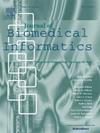Multimodal fusion architectures for Alzheimer’s disease diagnosis: An experimental study
IF 4.5
2区 医学
Q2 COMPUTER SCIENCE, INTERDISCIPLINARY APPLICATIONS
引用次数: 0
Abstract
Objective:
In the attempt of early diagnosis of Alzheimer’s Disease, varying forms of medical records of multiple modalities are gathered to seize the interaction of multiple factors. However, the heterogeneity of multimodal data brings a challenge. Hence, the role of artificial intelligence comes into play to provide the medical practitioner assistance in making diagnosis and prognosis. In order to be adopted as a clinical decision support system, interpretable or explainable model is important for healthcare professionals to trust the results. This study assessed various popular machine learning models under two multimodal fusion architectures to find the best combination in terms of both predictive performance and interpretability.
Methods:
Two architectures, early and late, also known as feature- and decision-level fusion were chosen for multinomial classification task. On top of the commonly used simple concatenation, this study employed weighted and hybrid weighted concatenation to fuse features within and across modalities under the two fusion structures. To test the efficacy of each model pipeline, the assessment was done according to their distinct foundations on which the models were built and each of their advantages was recognized. Classification metrics were unified and visualized into a pentagon to compare the overall performance of each pipeline. In addition, interpretability analysis was provided to quantify the importance of each modality and feature recognized by each model.
Results:
The potential characteristics of each type of pipelines in terms of prediction accuracy and ability to capture the relevant markers of each cognitive state were uncovered. In this particular healthcare application, the tree-based and linear models were the top 2 choices. Coupled with early and late fusion structure with weighted concatenation, reaching the balanced accuracy of 0.920 and 0.912, consecutively. The top 5 most important features revealed belong to Cognitive Test Scores and Neuropsychological Battery of Test modalities.
Conclusion:
This work contributes as medical applications of artificial intelligence evaluation to aid practitioners in understanding the capability of different fusion architectures with different classifiers in getting to know the use of machine learning in clinical setting. With accurate classification, early detection of Mild Cognitive Impairment and Alzheimer’s Disease can be achieved.

用于阿尔茨海默病诊断的多模态融合架构:一项实验研究
目的:在早期诊断阿尔茨海默病的尝试中,收集多种形式、多种模式的病历,把握多种因素的相互作用。然而,多模态数据的异质性带来了挑战。因此,人工智能的作用开始发挥作用,为医生提供诊断和预后方面的帮助。为了被采纳为临床决策支持系统,可解释或可解释的模型对于医疗保健专业人员信任结果非常重要。本研究在两种多模态融合架构下评估了各种流行的机器学习模型,以在预测性能和可解释性方面找到最佳组合。方法:选择早期和晚期两种架构,即特征级和决策级融合,用于多项分类任务。在常用的简单连接的基础上,本研究采用加权和混合加权连接来融合两种融合结构下模态内部和模态之间的特征。为了测试每个模型管道的有效性,根据模型建立的不同基础进行评估,并认识到每个模型管道的优点。分类指标是统一的,并可视化成五边形,以比较每个管道的整体性能。此外,还提供了可解释性分析,以量化每个模型识别的每种模态和特征的重要性。结果:揭示了每种类型管道在预测准确性和捕获每种认知状态相关标记的能力方面的潜在特征。在这个特定的医疗保健应用程序中,基于树的模型和线性模型是最受欢迎的两个选择。结合早期和晚期融合结构加权拼接,平衡精度依次达到0.920和0.912。前5个最重要的特征属于认知测试分数和神经心理学测试模式。结论:本工作有助于人工智能评估的医疗应用,帮助从业者了解不同分类器的不同融合架构的能力,从而了解机器学习在临床环境中的使用。通过准确的分类,可以实现轻度认知障碍和阿尔茨海默病的早期发现。
本文章由计算机程序翻译,如有差异,请以英文原文为准。
求助全文
约1分钟内获得全文
求助全文
来源期刊

Journal of Biomedical Informatics
医学-计算机:跨学科应用
CiteScore
8.90
自引率
6.70%
发文量
243
审稿时长
32 days
期刊介绍:
The Journal of Biomedical Informatics reflects a commitment to high-quality original research papers, reviews, and commentaries in the area of biomedical informatics methodology. Although we publish articles motivated by applications in the biomedical sciences (for example, clinical medicine, health care, population health, and translational bioinformatics), the journal emphasizes reports of new methodologies and techniques that have general applicability and that form the basis for the evolving science of biomedical informatics. Articles on medical devices; evaluations of implemented systems (including clinical trials of information technologies); or papers that provide insight into a biological process, a specific disease, or treatment options would generally be more suitable for publication in other venues. Papers on applications of signal processing and image analysis are often more suitable for biomedical engineering journals or other informatics journals, although we do publish papers that emphasize the information management and knowledge representation/modeling issues that arise in the storage and use of biological signals and images. System descriptions are welcome if they illustrate and substantiate the underlying methodology that is the principal focus of the report and an effort is made to address the generalizability and/or range of application of that methodology. Note also that, given the international nature of JBI, papers that deal with specific languages other than English, or with country-specific health systems or approaches, are acceptable for JBI only if they offer generalizable lessons that are relevant to the broad JBI readership, regardless of their country, language, culture, or health system.
 求助内容:
求助内容: 应助结果提醒方式:
应助结果提醒方式:


